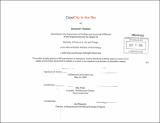CapaCity In the Sky
Author(s)
Rouben, Dawood F
DownloadFull printable version (16.49Mb)
Alternative title
Capa City In the Sky
City In the Sky
Other Contributors
Massachusetts Institute of Technology. Dept. of Architecture.
Advisor
Dan Chen.
Terms of use
Metadata
Show full item recordAbstract
Manhattan, as a model of a city with little room for lateral growth, is a good example of one driven by verticality. But verticality has its drawbacks with little light penetrating the dense urban jungle, populated by its collection of iconic towers. The concerns are many, but the one most relevant to this thesis is that of connectivity or the lack thereof in a dense city. Skyscrapers at present, currently stands alone and separate; their floors disconnected from the rest of the city and though ever soaring have done little more than intensify the social and physical disconnect between the city and its inhabitants. The one unifying factor appears in the form of public space - where people gather and interact. The purpose of this thesis is to explore the issue of connectivity via public space in its many forms through the following: - The possibility for a new kind of public space/program through the creation of a new layer in the sky. - A solution to the issues of Mass-Transit congestion to allow for ease of access to these prototypical architectural interventions. Effectively doubling the mass transit capacity through this new layer in the sky. Though this thesis is largely theoretical, it does use/make reference to Manhattan as a case study from which to design. For its unique density, history and public spaces render it an ideal site for such experimentation.
Description
Thesis (S.B. in Art and Design)--Massachusetts Institute of Technology, Dept. of Architecture, 2009. Cataloged from PDF version of thesis. Includes bibliographical references (p. 065-069).
Date issued
2009Department
Massachusetts Institute of Technology. Department of ArchitecturePublisher
Massachusetts Institute of Technology
Keywords
Architecture.